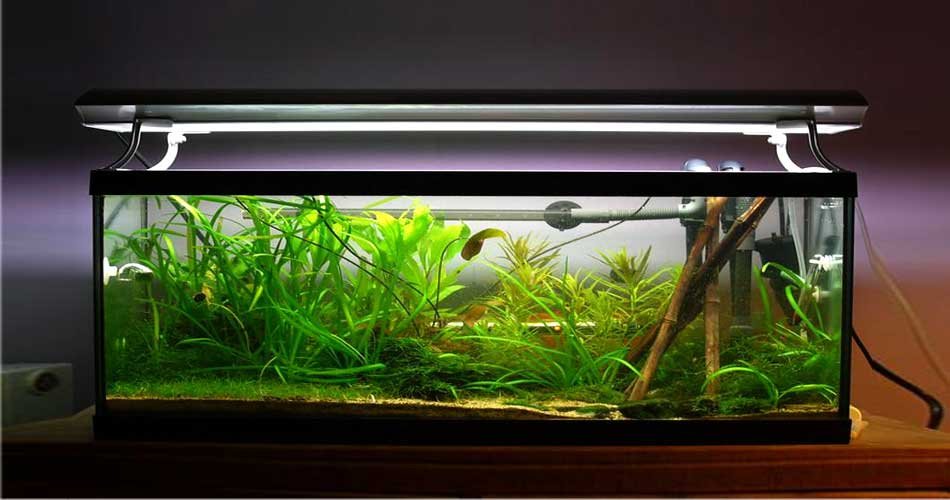How To Balance Aquarium Lighting: Expert Techniques
Balancing aquarium lighting is crucial for healthy aquatic life. It affects fish behavior and plant growth.
Proper lighting keeps your aquarium thriving. It prevents algae overgrowth and stress in fish. But finding the right balance can be tricky. Aquarium lighting is not just about illumination. It’s a vital part of creating a stable environment for your aquatic friends.
Light influences the biological processes of fish and plants. Too much light can lead to algae problems. Too little can stunt plant growth and affect fish health. Understanding the needs of your aquarium’s inhabitants is key.
You must consider the type of plants, fish, and the size of the tank. Each factor affects how much and what kind of light is needed. In this guide, you’ll learn how to achieve the perfect lighting balance.
Importance Of Lighting
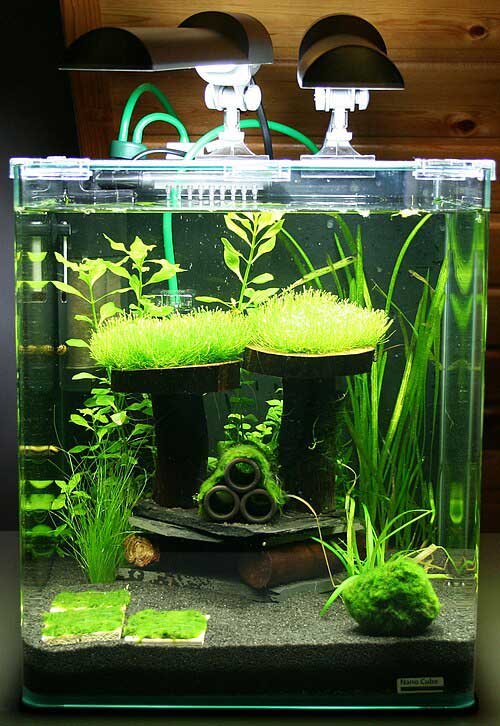
Aquarium lighting plays a crucial role in maintaining a healthy and thriving aquatic environment. It not only enhances the aesthetic appeal of your aquarium but also supports the biological needs of its inhabitants. Balancing aquarium lighting is vital for the well-being of both fish and plants.
Proper lighting mimics natural conditions and helps maintain a stable ecosystem. Understanding the importance of aquarium lighting will guide you in creating the ideal habitat for your aquatic friends.
Impact On Fish
Lighting significantly affects fish behavior and health. Fish rely on light to maintain their circadian rhythms, which are their natural biological clocks. This rhythm regulates feeding, mating, and resting patterns. Inadequate lighting can disrupt these cycles, leading to stress and health issues.
- Stress Reduction: Proper lighting minimizes stress, promoting healthier and more active fish.
- Color Enhancement: Balanced lighting brings out the vibrant colors in fish, making them more visually appealing.
- Behavior Patterns: Light influences fish behavior, including schooling and territorial actions.
A study suggests that fish exposed to consistent lighting patterns are more resilient and adapt better to their environment. A lighting schedule that mimics sunrise and sunset can help maintain their natural rhythms. Too much light can lead to algae growth, while too little may cause lethargy in fish. Consider using a timer to automate your aquarium lights, ensuring a balanced day-night cycle. This approach helps maintain stable lighting conditions without manual intervention.
Role In Plant Growth
Aquatic plants require light for photosynthesis, a process that converts light into energy. Adequate lighting ensures healthy plant growth, which in turn supports the overall aquarium ecosystem. Healthy plants provide oxygen and serve as natural filters, absorbing nutrients and impurities.
| Lighting Type | Benefits |
|---|---|
| LED | Energy-efficient, adjustable spectrum for different plant needs. |
| Fluorescent | Good for low-light plants, moderate energy use. |
| Halogen | High intensity, suitable for deep tanks, with more heat production. |
Choosing the right lighting depends on the type of plants you have. Some plants thrive under intense light, while others prefer lower levels. Assessing plant requirements will help you select the appropriate lighting system.
Implementing a balanced lighting schedule can enhance photosynthesis, promoting lush plant growth. Regularly adjusting light intensity and duration is key to fostering a harmonious aquarium environment. Monitoring plant health will guide you in fine-tuning your lighting setup.
Types Of Aquarium Lights
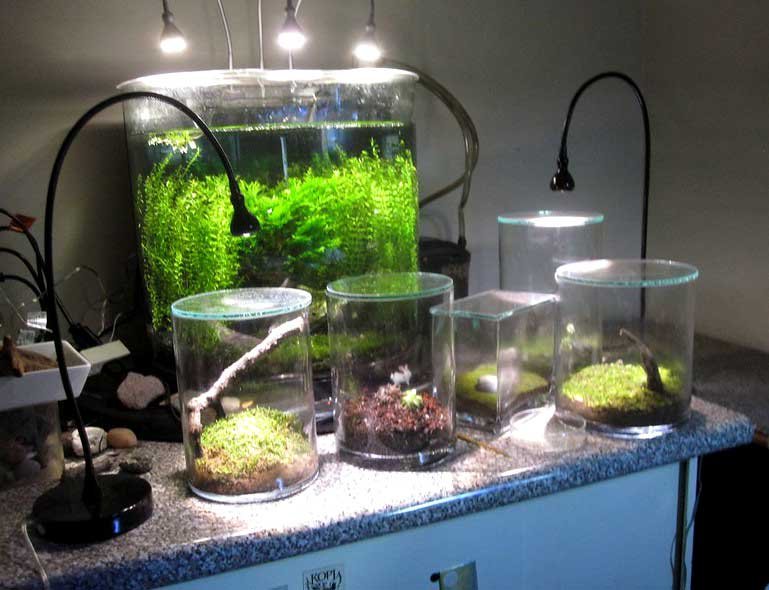
Choosing the right lighting is crucial for maintaining a balanced aquarium. The type of light affects the health of aquatic plants and the appearance of fish.
Understanding the different types of aquarium lights helps in creating the perfect environment. Each type of light has its unique features and benefits, which cater to specific needs in an aquarium setup.
Led Lights
LED lights are popular for aquariums due to their energy efficiency and long lifespan. They provide a wide range of colors and intensities, allowing for customization to fit your tank’s needs. Here are some key features of LED lights:
- Energy Efficiency: LEDs consume less power compared to other types.
- Longevity: These lights can last up to 50,000 hours, reducing the need for frequent replacements.
- Customizable: Many LED lights offer adjustable settings for color and intensity.
LED lights also generate less heat, which keeps the water temperature stable. This is particularly important in smaller tanks where temperature fluctuations can affect aquatic life. Here is a quick comparison of LED lights versus other types:
| Feature | LED Lights | Other Lights |
|---|---|---|
| Energy Use | Low | Medium to High |
| Lifespan | Very Long | Shorter |
| Heat Output | Low | Higher |
Fluorescent Lights
Fluorescent lights are a traditional choice for aquariums. They are known for providing bright, even lighting. These lights are ideal for freshwater tanks and promote plant growth. Some benefits of fluorescent lights include:
- Cost-Effective: Fluorescent lights are generally less expensive than LEDs.
- Good for Plants: These lights emit wavelengths that help plant growth.
- Variety: Available in different sizes and colors to fit various tank requirements.
Fluorescent lights come in two main types: T5 and T8. T5 lights are more efficient and brighter than T8 lights. This makes T5 suitable for tanks with plants and corals. Here’s a brief overview of T5 vs. T8 lights:
| Feature | T5 Lights | T8 Lights |
|---|---|---|
| Brightness | Higher | Lower |
| Efficiency | High | Medium |
| Cost | Higher | Lower |
Metal Halide Lights
Metal halide lights are powerful and suitable for large or deep aquariums. They are often used in reef tanks to support coral growth. Key characteristics include:
- High Intensity: These lights provide strong illumination, reaching deeper water levels.
- Full Spectrum: Metal halide lights offer a full spectrum of light, ideal for marine life.
- Heat Output: These lights produce a lot of heat, which may require additional cooling systems.
Metal halide lights can mimic natural sunlight, creating a vibrant and dynamic environment. They are often paired with LED or fluorescent lights to balance the heat and energy consumption. Here’s a quick comparison of metal halide lights with other types:
| Feature | Metal Halide Lights | Other Lights |
|---|---|---|
| Intensity | Very High | Medium to High |
| Heat Output | Very High | Low to Medium |
| Cost | Higher | Varies |
Light Duration
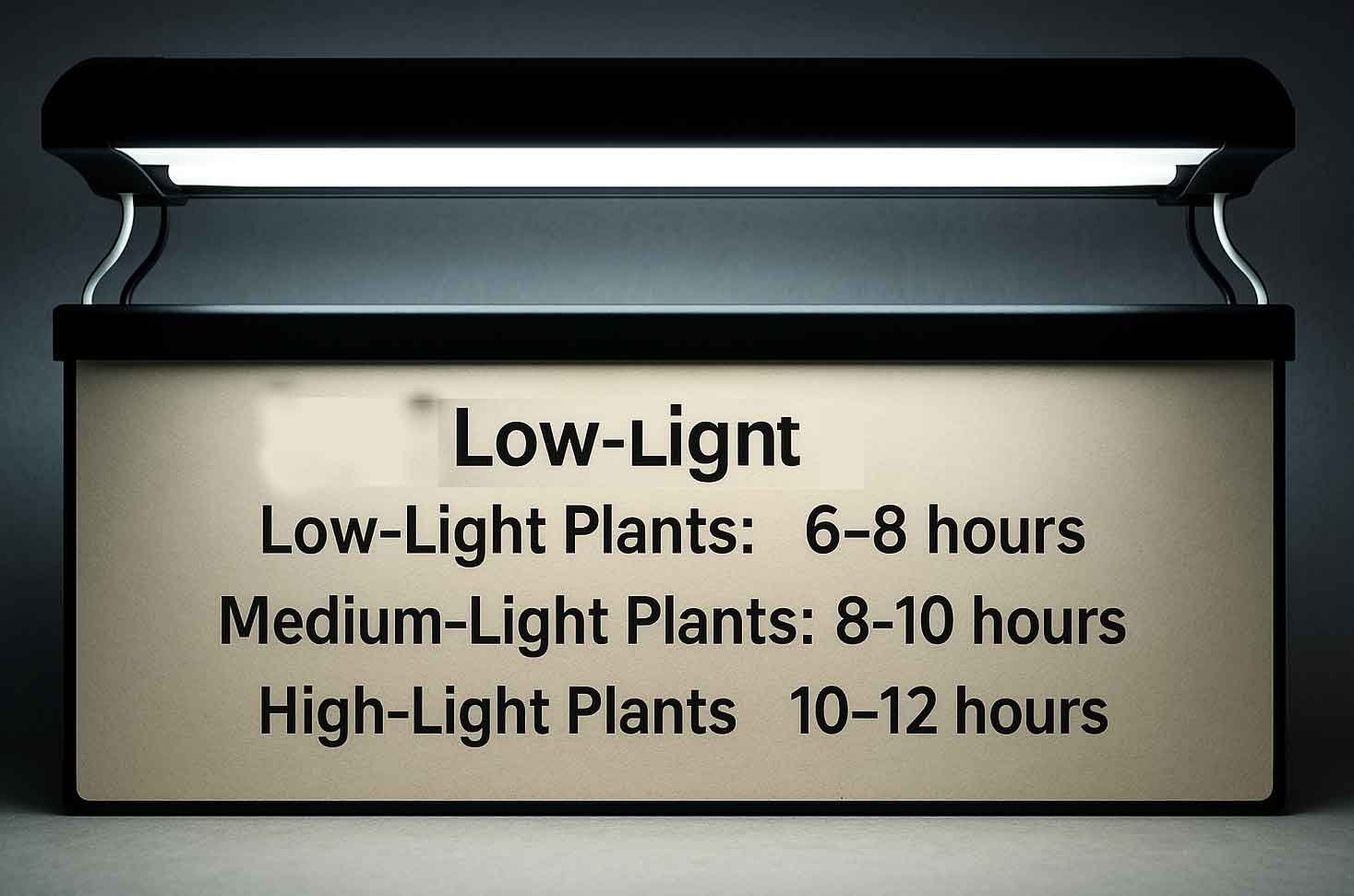
Creating the right balance of lighting in an aquarium is crucial for the health of both plants and fish. One key aspect is the light duration, which refers to how long the lights stay on each day.
Too much light can promote algae growth, while too little can hinder plant growth and stress fish. Finding the right duration helps maintain a thriving underwater environment.
Daytime Cycle
The daytime cycle is when your aquarium lights are on. This cycle mimics natural sunlight. Most aquariums benefit from about 8 to 10 hours of light each day. This duration supports plant photosynthesis and keeps fish active. Here are some tips to help set the perfect daytime cycle:
- Use a Timer: Automate your lighting with a timer. This ensures a consistent light schedule every day.
- Observe Your Aquarium: If you notice excessive algae, consider reducing light hours. Algae thrive in bright conditions.
- Consider Plant Needs: Different plants require different light intensities. Adjust your light duration based on the specific needs of your plants.
To make this easier, consider the following table:
| Plant Type | Recommended Light Hours |
|---|---|
| Low-Light Plants | 6-8 hours |
| Medium-Light Plants | 8-10 hours |
| High-Light Plants | 10-12 hours |
Adjust these hours based on your tank’s unique needs. Regular monitoring helps maintain a healthy aquarium ecosystem.
Nighttime Cycle
The nighttime cycle is equally important. During this time, the lights are off, allowing fish to rest and plants to complete their natural cycles. A consistent nighttime cycle helps reduce stress for your aquatic life. Consider these strategies to optimize the nighttime cycle:
- Set a Dark Period: Ensure your aquarium has at least 12 hours of darkness. This mimics the natural environment.
- Avoid Disturbances: Keep the room dark during the nighttime cycle. Avoid turning on nearby lights.
- Watch for Nighttime Behavior: Some fish are more active at night. Observe if your fish seem stressed or active during the night.
Here’s a simple nighttime cycle schedule:
- Turn off the lights at 7 PM.
- Keep the room dark until 7 AM.
- Maintain this routine daily.
Consistency in light duration helps maintain a balanced and stress-free environment for your aquarium inhabitants.
Light Intensity
Balancing aquarium lighting is crucial for a healthy aquatic environment. One key factor is light intensity. The right intensity helps plants grow and keeps fish stress-free.
Too much light can promote algae growth, while too little can stunt plant growth. Understanding and managing light intensity ensures your aquarium thrives.
Measuring Intensity
Measuring light intensity is essential for aquarium health. A PAR meter is a useful tool. It measures the photosynthetically active radiation, which plants use for growth. A PAR meter gives precise readings, helping you adjust light levels effectively.
For those without a PAR meter, consider using lux meters. They measure light intensity in lux, which is slightly different from PAR. While not as accurate for aquariums, they still provide useful data.
Regular measurements help track changes over time. Here’s a simple guide to light levels:
- Low light: 15-30 PAR
- Medium light: 30-60 PAR
- Highlight: 60+ PAR
Keep a log of your readings. This helps you identify patterns and make informed decisions. Consistent measurement ensures you provide the best environment for your aquatic life.
Adjusting Brightness
Once you know your light intensity, adjusting brightness is the next step. It’s crucial to match the light to your aquarium’s needs. Start by assessing your aquarium inhabitants. Different species have unique light requirements.
Research the needs of your plants and fish to set an ideal brightness level. Use an adjustable light fixture for flexibility. Many fixtures come with dimming options, making it easy to tweak brightness.
If your fixture doesn’t dim, consider adding a timer to control light duration. This helps simulate natural light cycles, which benefits your aquarium’s inhabitants. Another method is using filtering materials like mesh or screen. Placing these between the light source and the water can reduce intensity. This technique is cost-effective and easy to implement. Here are some tips for adjusting brightness:
- Start with a low setting and gradually increase.
- Observe your plants and fish for any stress signs.
- Adjust based on seasonal changes and tank conditions.
Regularly monitor and adjust brightness to maintain a balanced ecosystem. Your efforts will lead to a vibrant and healthy aquarium.
Color Spectrum
Balancing aquarium lighting is crucial for healthy fish and vibrant plants. The color spectrum is a key element. It influences the growth and appearance of everything in your tank. Different colors affect plants and fish differently. Understanding the spectrum helps in creating a balanced aquatic environment.
Importance Of Color
Color in aquarium lighting is not just aesthetic. It plays a vital role in the health of your tank’s inhabitants. Fish and plants react differently to various colors. Understanding this can transform your tank’s ecosystem. Colors like blue and red have specific effects:
- Blue Light: Enhances fish coloration and promotes photosynthesis in aquatic plants.
- Red Light: Boosts plant growth but can encourage algae if used excessively.
Using the right colors can prevent algae growth and enhance your fish’s natural beauty. Misbalanced lighting can stress fish and stunt plant growth.
| Color | Effect on Fish | Effect on Plants |
|---|---|---|
| Blue | Enhances coloration | Promotes photosynthesis |
| Red | May stress fish | Boosts growth |
Choosing colors wisely can lead to a healthy and visually appealing aquarium.
Choosing The Right Spectrum
Choosing the correct spectrum is essential for aquarium health. The right balance supports plant growth and keeps fish stress-free. Different spectrums suit different tank types. Consider these factors:
- Tank Type: Freshwater tanks need different spectrums than saltwater tanks.
- Plant Needs: High-light plants require more intense spectrums.
- Fish Behavior: Some fish prefer dim lights, others thrive in bright conditions.
Using full-spectrum lights can mimic natural sunlight. This supports plant photosynthesis and enhances fish colors. Avoid narrow spectrums that can cause algae. Adjust the lighting duration and intensity to suit your tank’s unique needs.
Experimenting and observing changes will help find the perfect balance. Remember, the right spectrum is a key to a thriving, balanced aquarium environment.
Lighting For Different Aquariums
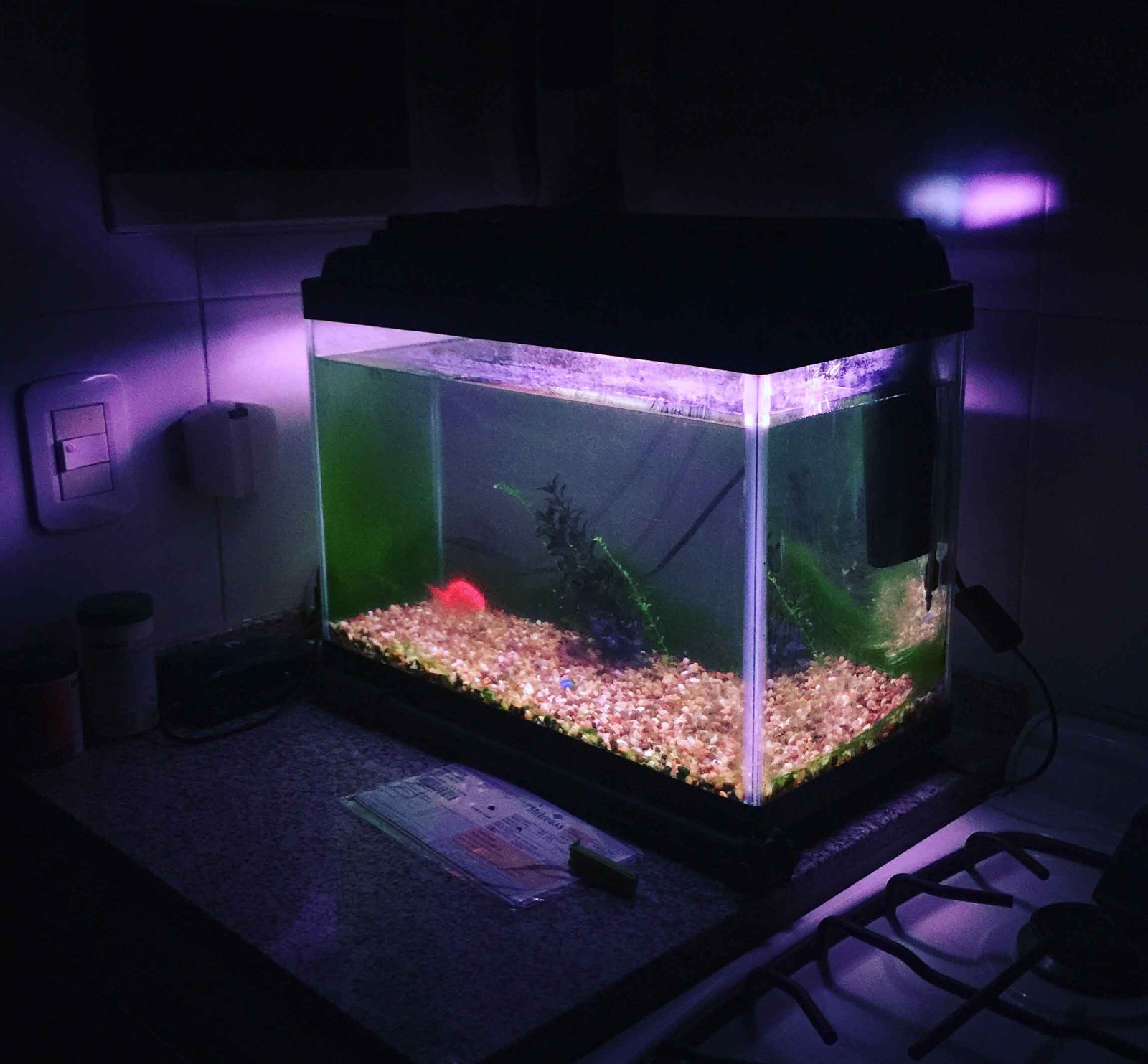
Lighting plays a crucial role in maintaining a healthy aquarium environment. Each type of aquarium has unique lighting needs. Balancing aquarium lighting ensures that fish, corals, and plants thrive. Understanding these requirements helps in providing the best conditions. Let’s explore the specifics of lighting for different aquariums.
Freshwater Tanks
Freshwater tanks require a balanced lighting approach. This helps in mimicking natural environments. The right lighting promotes the health of fish and plants. Here are some key considerations:
- Duration: Aim for 8 to 12 hours of light daily. This simulates a natural day-night cycle.
- Intensity: Use moderate lighting. Too much light can lead to algae growth.
- Type: LED lights are energy-efficient and offer a range of colors.
Choosing the correct lighting for your freshwater tank involves understanding the needs of your specific fish and plants. Consider the following table for guidance:
| Fish Type | Lighting Requirement |
|---|---|
| Tropical Fish | Moderate light, 10-12 hours/day |
| Goldfish | Low to moderate light, 8-10 hours/day |
Proper lighting not only enhances the beauty of your tank but also supports the ecosystem within.
Saltwater Tanks
Saltwater tanks demand specific lighting conditions. This is vital for the health of marine life and corals. The lighting needs differ based on the inhabitants.
- Coral Growth: Use high-intensity lights. Consider metal halide or T5 fluorescent lights.
- Color Spectrum: Blue and white lights mimic ocean conditions.
- Duration: Provide 10 to 12 hours of light daily.
A saltwater tank with corals will have different needs than a fish-only setup. Here’s a simple breakdown:
| Tank Type | Recommended Lighting |
|---|---|
| Reef Tank | High-intensity, full-spectrum lights |
| Fish-Only Tank | Moderate light, 10-12 hours/day |
Proper lighting ensures vibrant colors and healthy growth in your saltwater tank.
Planted Tanks
Planted tanks thrive under specific lighting conditions. The right balance encourages plant growth and health. Consider the following:
- Intensity: High-intensity lights are ideal for plant growth.
- Color Temperature: Use lights with a color temperature of 6500K to 7500 K.
- Duration: 10 to 12 hours of light daily encourages photosynthesis.
Different plants have varying light needs. Understanding this helps in selecting the right lighting:
| Plant Type | Lighting Requirement |
|---|---|
| Low-Light Plants | Low to moderate light, 10 hours/day |
| High-Light Plants | High-intensity light, 12 hours/day |
Choosing the right lighting not only supports plant growth but also enhances the aesthetic appeal of your tank.
Common Lighting Mistakes
Balancing aquarium lighting is essential for a thriving aquatic environment. Proper lighting helps plants grow and keeps fish healthy. Yet, many aquarium enthusiasts make common lighting mistakes.
These errors can cause stress to fish and hinder plant growth. Understanding these mistakes can help you create a balanced and vibrant aquarium.
Overexposure
Overexposure happens when the aquarium receives too much light. This can lead to several problems. Algae growth is a common issue with excessive lighting. Algae can quickly cover glass, plants, and decorations, making the tank look unattractive.
Overexposure can also stress fish. Fish need periods of darkness to rest. Too much light can disrupt their natural cycle. Here are some signs of overexposure:
- Excessive algae growth
- Stressed or hiding fish
- Faded colors in fish and plants
To prevent overexposure, consider the following tips:
| Tip | Description |
|---|---|
| Set a timer | Use a timer to control light duration. Aim for 8-10 hours per day. |
| Choose the right bulb | Select a bulb with a suitable intensity for your aquarium. |
| Observe your tank | Regularly check for signs of stress or algae. |
Underexposure
Underexposure occurs when the aquarium receives too little light. This can also cause problems. Plants need light for photosynthesis. Without enough light, they may wilt or die. Fish may become less active and lose their vibrant colors in low light conditions. Signs of underexposure include:
- Poor plant growth or plant death
- Fish appearing dull and inactive
- Cloudy water due to decaying plant matter
Here are some ways to avoid underexposure:
| Tip | Description |
|---|---|
| Increase light duration | Extend the light period to 10-12 hours if necessary. |
| Upgrade lighting | Consider higher wattage bulbs or LED lights for better brightness. |
| Monitor plant health | Regularly check plant growth and adjust lighting as needed. |
Automation And Timers
Balancing aquarium lighting is crucial for maintaining a healthy aquatic environment. Too much or too little light can stress your aquatic life. This is where automation and timers come into play.
They help you manage lighting with precision and ease. Automation ensures that your aquarium receives consistent and accurate lighting. Timers allow you to set specific durations for light exposure. Together, they create a stable environment for your fish and plants.
Benefits Of Automation
Automation offers several advantages for aquarium enthusiasts. It simplifies the process of managing aquarium lights. Here are some key benefits:
- Consistency: Automated systems provide consistent lighting schedules. This consistency is crucial for the health of aquatic plants and animals.
- Convenience: Set it and forget it. Automation takes the guesswork out of daily lighting management.
- Energy Efficiency: Automated systems can optimize energy use. They ensure lights are on only when necessary.
- Stress Reduction: Consistent lighting reduces stress for fish. This promotes healthier and more vibrant aquatic life.
Consider automation as an investment in your aquarium’s health. Whether you have a freshwater or saltwater setup, automation benefits all. It frees up your time while ensuring your aquarium thrives.
Choosing A Timer
Selecting the right timer is essential for effective lighting management. Here are some factors to consider when choosing a timer:
- Type of Timer: Mechanical or digital. Mechanical timers are simple and cost-effective. Digital timers offer more features and precision.
- Programmability: Look for timers with multiple settings. This allows for more control over lighting durations.
- Durability: Choose a timer that can withstand humidity. Aquariums create a moist environment.
- Ease of Use: Ensure the timer is user-friendly. Easy programming is essential for seamless operation.
Here’s a quick comparison table to help you choose:
| Feature | Mechanical Timer | Digital Timer |
|---|---|---|
| Precision | Moderate | High |
| Cost | Lower | Higher |
| Settings | Limited | Multiple |
| Ease of Use | Simple | Varies |
Choose a timer that fits your needs and budget. A good timer simplifies lighting management. It ensures your aquarium remains a healthy habitat.
Frequently Asked Questions
How Many Hours A Day Should My Aquarium Light Be On?
Aquarium lights should be on for 8-12 hours daily. This mimics natural daylight and supports plant growth. Adjust based on your tank’s needs and inhabitants. Too much light can cause algae growth, while too little affects plants and fish health.
Use a timer for consistency.
How Do I Add Equilibrium To My Aquarium?
Add equilibrium by balancing fish, plants, and filtration. Choose compatible species and maintain water quality. Regularly test pH, ammonia, and nitrate levels. Use a reliable filter and perform routine water changes. Ensure proper lighting and temperature to support plant growth.
Avoid overcrowding to maintain a healthy ecosystem.
What To Do If The Aquarium Light Is Too Bright?
Dim the aquarium light using adjustable settings or a dimmer switch. Add floating plants to reduce brightness. Use frosted or opaque covers for diffused lighting. Opt for bulbs with lower wattage or softer light spectrum. Ensure the light schedule mimics natural day-night cycles for balanced illumination.
How To Position an Aquarium Light?
Place the aquarium light directly above the tank for optimal coverage. Ensure it provides uniform lighting. Position it to prevent glare and minimize shadows. Adjust the height based on plant and fish needs. Regularly check and maintain proper lighting conditions for a healthy aquarium environment.


